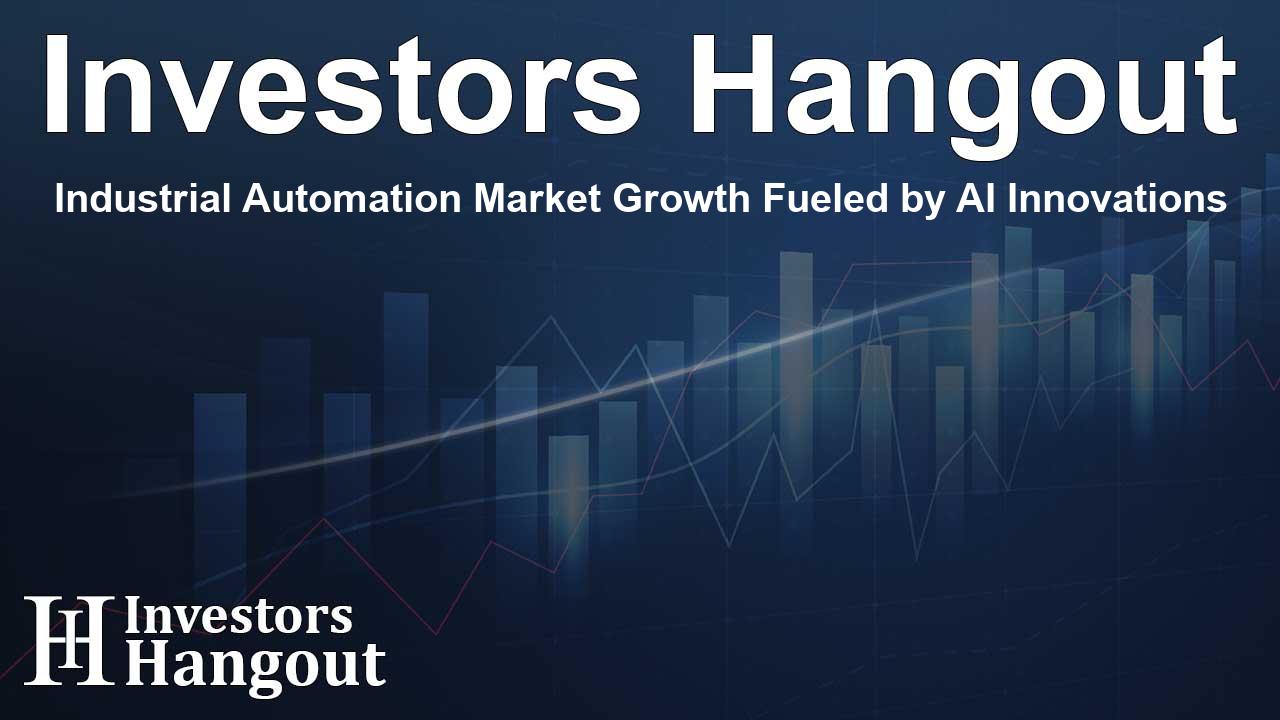Industrial Automation Market Growth Fueled by AI Innovations

Industrial Automation Market Growth Driven by AI Innovations
The global industrial automation market is on the cusp of a significant transformation, driven by the integration of artificial intelligence (AI) and the growing demand for advanced automation solutions. With a projected growth of USD 107.1 billion from 2024 to 2028, the market is set to expand at a compound annual growth rate (CAGR) of approximately 9.45%. The increasing complexity of market dynamics and the rising necessity for customizable solutions are key factors contributing to this growth.
The Role of AI in Industrial Automation
The emergence of AI technologies has introduced unprecedented capabilities in manufacturing processes. From enhancing operational efficacies to streamlining data analysis, AI enables manufacturers to implement solutions that optimize productivity while minimizing labor costs. Automation is increasingly becoming indispensable in sectors like healthcare, transport, and manufacturing. The constant interaction between AI and robotics enhances operational efficiency, enabling businesses to respond swiftly to market demands.
Key Components of the Market
The market encompasses a wide range of automation products, including Supervisory Control and Data Acquisition (SCADA) systems, Programmable Logic Controllers (PLCs), and various types of sensors. With products designed to cater to both process and discrete industries, the industrial automation landscape is enriched by the inclusion of AI-driven analytics, IoT applications, and advanced communication technologies like 5G.
Emerging Trends in Industrial Automation
As industries adopt more sophisticated technologies, several trends are shaping the market's future. Open platform architecture in automation software allows users to modify functionalities, resulting in increased product adaptability for Original Equipment Manufacturers (OEMs). Furthermore, the rise of collaborative robots and machine learning is facilitating the advancement of manufacturing processes, empowering businesses to enhance efficiency and reduce errors.
Market Challenges
Despite the promising growth, the industry faces several challenges. The integration of IIoT technologies often presents complex design issues, particularly with maintaining real-time data accuracy while managing an increasing number of devices connected to the network. Moreover, continuous product development demands significant investments, which can present financial hurdles for operators.
Market Segmentation Overview
The industrial automation market is segmented based on product types, end-users, and geographic regions. Major product categories include SCADA systems, PLCs, Drives, and Sensors. Among end-users, the key sectors represented are the process industry and discrete industry. The global reach of this market spans across major regions, including APAC, North America, Europe, South America, and the Middle East and Africa.
Insights into Future Opportunities
Exploring how AI influences innovation continues to be at the forefront of discussions within the market. As companies evaluate their automation strategies, the incorporation of intelligent systems will be crucial in achieving competitive advantages. The focus on sustainability and operational efficiency will further drive investments in advanced technologies, fostering a new era of industrial transformation.
About Technavio
Technavio is a premier global technology research and advisory firm that provides actionable insights into emerging market trends. With a diverse portfolio of over 17,000 reports covering a multitude of technologies, Technavio equips businesses with the knowledge needed to optimize their market positions and identify opportunities for growth.
Contacts
Technavio Research
Jesse Maida
Media & Marketing Executive
US: +1 844 364 1100
UK: +44 203 893 3200
Website: www.technavio.com/
Frequently Asked Questions
What is the expected growth of the industrial automation market?
The industrial automation market is projected to grow by USD 107.1 billion from 2024 to 2028.
How is AI impacting the industrial automation industry?
AI is enhancing operational efficiencies and enabling better data analysis and smart manufacturing solutions.
What are the main challenges facing the industrial automation market?
The main challenges include complex design issues and high investment costs associated with new technologies.
Which sectors are driving the demand for industrial automation?
Sectors like healthcare, transportation, and manufacturing are significantly increasing their adoption of automation technologies.
How does Technavio assist businesses in the industrial automation sector?
Technavio provides insightful market research that helps companies identify trends and strategic opportunities to optimize their market performance.
About Investors Hangout
Investors Hangout is a leading online stock forum for financial discussion and learning, offering a wide range of free tools and resources. It draws in traders of all levels, who exchange market knowledge, investigate trading tactics, and keep an eye on industry developments in real time. Featuring financial articles, stock message boards, quotes, charts, company profiles, and live news updates. Through cooperative learning and a wealth of informational resources, it helps users from novices creating their first portfolios to experts honing their techniques. Join Investors Hangout today: https://investorshangout.com/
Disclaimer: The content of this article is solely for general informational purposes only; it does not represent legal, financial, or investment advice. Investors Hangout does not offer financial advice; the author is not a licensed financial advisor. Consult a qualified advisor before making any financial or investment decisions based on this article. The author's interpretation of publicly available data shapes the opinions presented here; as a result, they should not be taken as advice to purchase, sell, or hold any securities mentioned or any other investments. The author does not guarantee the accuracy, completeness, or timeliness of any material, providing it "as is." Information and market conditions may change; past performance is not indicative of future outcomes. If any of the material offered here is inaccurate, please contact us for corrections.